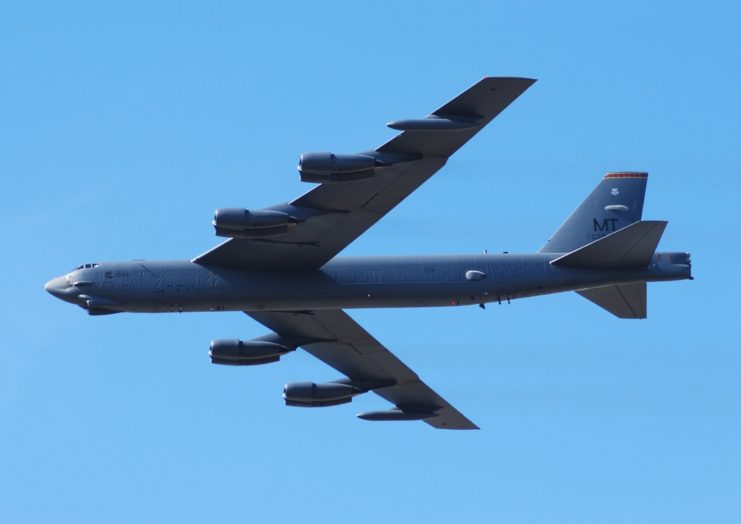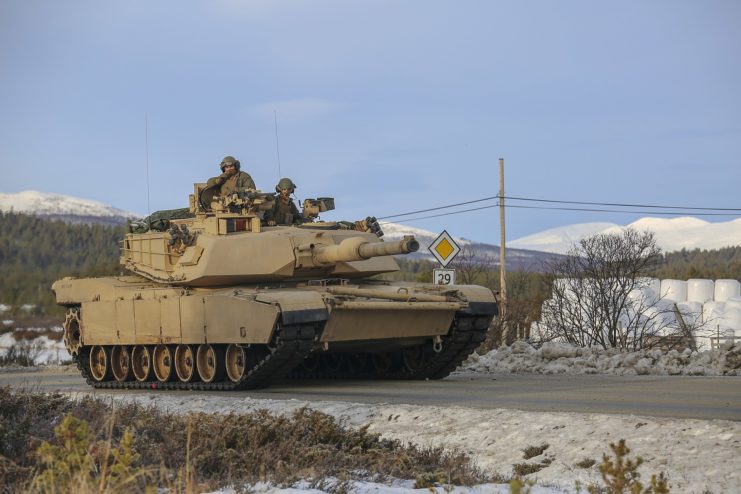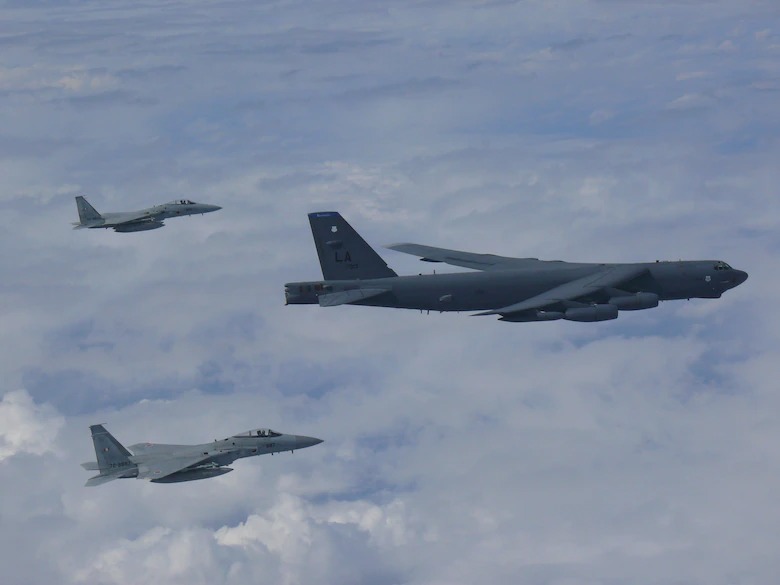A US Air Force B-52 Stratofortress bomber sent an emergency radio message while flying over Gloucestershire in the UK on September 25, 2020.
The bomber was one of two that were flying over England at the time. It sent a “squawk code 770” which indicates a general emergency while it was flying near Tewkesbury.
Military planes regularly send emergency distress signals for even the slightest problem. It is not known specifically what problem this aircraft faced.
The two planes were identified as BALOO51 and BALOO52. B-52s are capable of delivering 30 tons of bombs, missiles and mines.
There are six of the Boeing B-52s stationed at RAF Fairford in Cotswolds.
A spokesperson said that a US B-52 Stratofortress from the 5th Bomb Wing at Minot Air Force Base in North Dakota, USA, was returning to RAF Fairford after a routine training mission. According to the spokesperson, the plane experienced a general emergency while flying. The crew readily identified the problem and responded according to their training.

The emergency signal was a precautionary step to alert the airfield and arrange access for a safe and clear landing “which they successfully accomplished,” said the spokesperson.
The two planes were part of a mock attack on Russia’s fortress territory in eastern Europe. NATO countries cooperated in the staged exercise to simulate a rain on Kaliningrad.
That area of Russia contains a high number of air-defense missiles, anti-ship missiles and surface-to-surface missiles. It is a highly strategic area should their ever be a military conflict with Russia. The missiles based there can reach far into Europe.
The area is also part of what is known as the Suwalki Gap. The southernmost portion of the gap is Belarus which Moscow has been tightening its control over. Mass protests erupted after an election in August was suspected of being rigged. Russian Prime Minister Vladimir Putin also place pressure on Belarusian President Alexander Lukashenko to get him to sign an accord which Russia could use to gain even greater access to the Suwalki Gap.
If Russia ever decided to block off the gap, they could effectively cut off NATO’s Baltic members from the rest of their allies.
It has been a busy time for the bombers. On August 28, they flew over all 30 NATO nations in one day.
They have also made at least three runs into Russian air space which caused the Russians to scramble their defenses. NATO also had spy planes in the area to monitor and analyze the Russian response.

In 2014 and 2015, the think-tank RAND simulated a Russian attack at the Suwalki Gap. They found that NATO was unable to match Russian forces in the area. Worse, they were unable to move effectively and found themselves pinned down and destroyed with no way to retreat.
General Jeff Harrigian, the commander of US Air Forces in Europe, told reporters that the Air Force is aware of the weakness in the Suwalki Gap and that they have prepared for it. “We think through those plans all the time, and… if that would ever come to fruition, we’d be ready to execute.”
Another Article From Us: Company Imports Trove of M1 Carbines from Ethiopia to Sell in US
It appears from the recent exercise and a similar one that took place in 2019 that the US appears to be preparing to attack from the air should the need arise.
